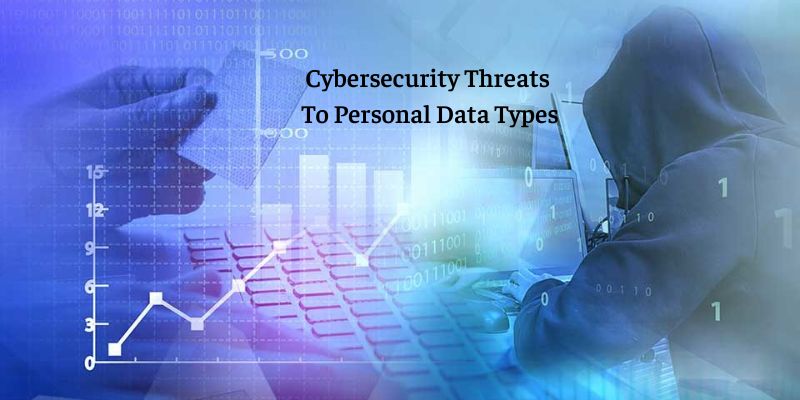You know how deadly internet attacks can be if you work in cybersecurity threats to personal data. Cyber threats include spear phishing, data breaches, attacks using brute force, and intrusions into critical infrastructure. They target both individuals and corporations while looking for a victim. Data breaches can have major repercussions for both customers and businesses, including financial losses, compromised identities, and reputational damage. Companies must take the proper precautions to secure their assets and ensure that they have a system in place that will reduce data security threats by training personnel, checking networks for vulnerabilities, and more. Find more on tapchiai.net
Cybersecurity Threats To Personal Data: What are cyberthreats?

Cyber threats are negative actions carried out with the purpose of eradicating, stealing, or impeding digital life in general. These dangers include, for example, computer viruses, data breaches, and Denial of Service (DoS) attacks. The more we rely on technology, the more prevalent and advanced cyber threats have become, posing a serious risk to both individuals and businesses. The first step in protecting yourself from cyber threats is understanding them.
Cybersecurity Threats To Personal Data: What consequences do cyber-attacks have?
Cyber-attacks have increased in frequency during the past few years. Everyone, from large corporations to governmental institutions, is susceptible to the risk of a cyberattack. As more private information is stored and shared online, the risks associated with data breaches and cyberattacks are growing.
Cyber attacks have the potential to result in power outages, equipment failure in the military, and leaks of information related to national security. Networks for computers and phones may be disrupted, and systems may become paralyzed, rendering data unavailable.
Cybersecurity Threats To Personal Data Types

The following categories of cyber security dangers should be thoroughly understood by cyber security experts.
1. Cybersecurity Threats To Personal Data: Malware
When a user clicks on a malicious link or attachment, harmful software is installed and malware is triggered. According to Cisco, once triggered, malware can: Block access to crucial network components (ransomware);
- Install more malicious software
- Send data from the hard disk to collect information covertly (spyware)
- Individual components can be damaged, rendering the system useless.
2. Cybersecurity Threats To Personal Data: Emotet
Emotet is “an advanced, modular banking Trojan that serves primarily as a downloader or dropper of other banking Trojans,” according to the Cybersecurity and Infrastructure Security Agency (CISA). One of the most expensive and harmful malware variants is still Emotet.
3. Cybersecurity Threats To Personal Data: Disruption of Service
The same technique is accomplished via a distributed DoS (DDoS), except the attack comes from a computer network. Flood attacks are frequently used by cyber attackers to thwart the “handshake” procedure and do a DoS. There are numerous additional methods that may be employed, and some cybercriminals make use of networks being down to conduct additional assaults.
4. Cybersecurity Threats To Personal Data: Phishing
Phishing attempts employ fake correspondence, such an email, to trick the target into opening it and acting on the instructions it contains, like inputting a credit card number. The purpose of the attack is to either infect the victim’s machine with malware or steal personal information like credit card numbers and login credentials.
5. Cybersecurity Threats To Personal Data: Injection of SQL
When malicious code is put into a server that supports SQL, the attack is classified as a Structured Query Language (SQL) injection. The server divulges information when infected. Simply typing the malicious code into a search box on a susceptible website can submit it.
6. Cybersecurity Threats To Personal Data: Spyware
Spyware allows a hostile actor to get sensitive data, including passwords and payment information, from an unaware user. Desktop apps, mobile devices, and web browsers can all be impacted by spyware.
7. Cybersecurity Threats To Personal Data: Adware
Adware enables advertisers to offer a user specifically relevant ads by monitoring a user’s browsing activity to identify behavior patterns and interests. The usage of adware, which is linked to spyware but does not require the installation of software on the user’s device and is not always used maliciously, can undermine the user’s privacy.
8. Cybersecurity Threats To Personal Data: Rootkits
Rootkits are pieces of software that are injected into operating system kernels, hypervisors, apps, and firmware to grant remote control of a computer. The attacker can take full control of the computer, launch the operating system from a corrupted environment, and spread further malware.
Cybersecurity Threats To Personal Data Development

As the internet and operations that rely on it grow and adapt, so do cyber security procedures. According to Secureworks, researchers into cyber security are focusing more on the two topics in the following categories.
The Internet of Things.
Hackers have entry points through individual gadgets that link to the internet or other networks. The data of users, including their bank account information, credit card statements, and personal information, may also be accessed by hackers who successfully breach a linked house.
The Growth of Data
To secure their data and operations, businesses and government organizations need the highest level of cyber security. Cyber security specialists must have a thorough understanding of how to counter the most recent emerging cyber threats.
Conclusion
In the modern digital environment, cyber dangers are a legitimate concern that must be treated seriously. Anyone, including people, businesses, and governments, could be significantly impacted by them. The risk of a cyberattack can be reduced by taking a number of steps, which can all be utilized as preventative.







